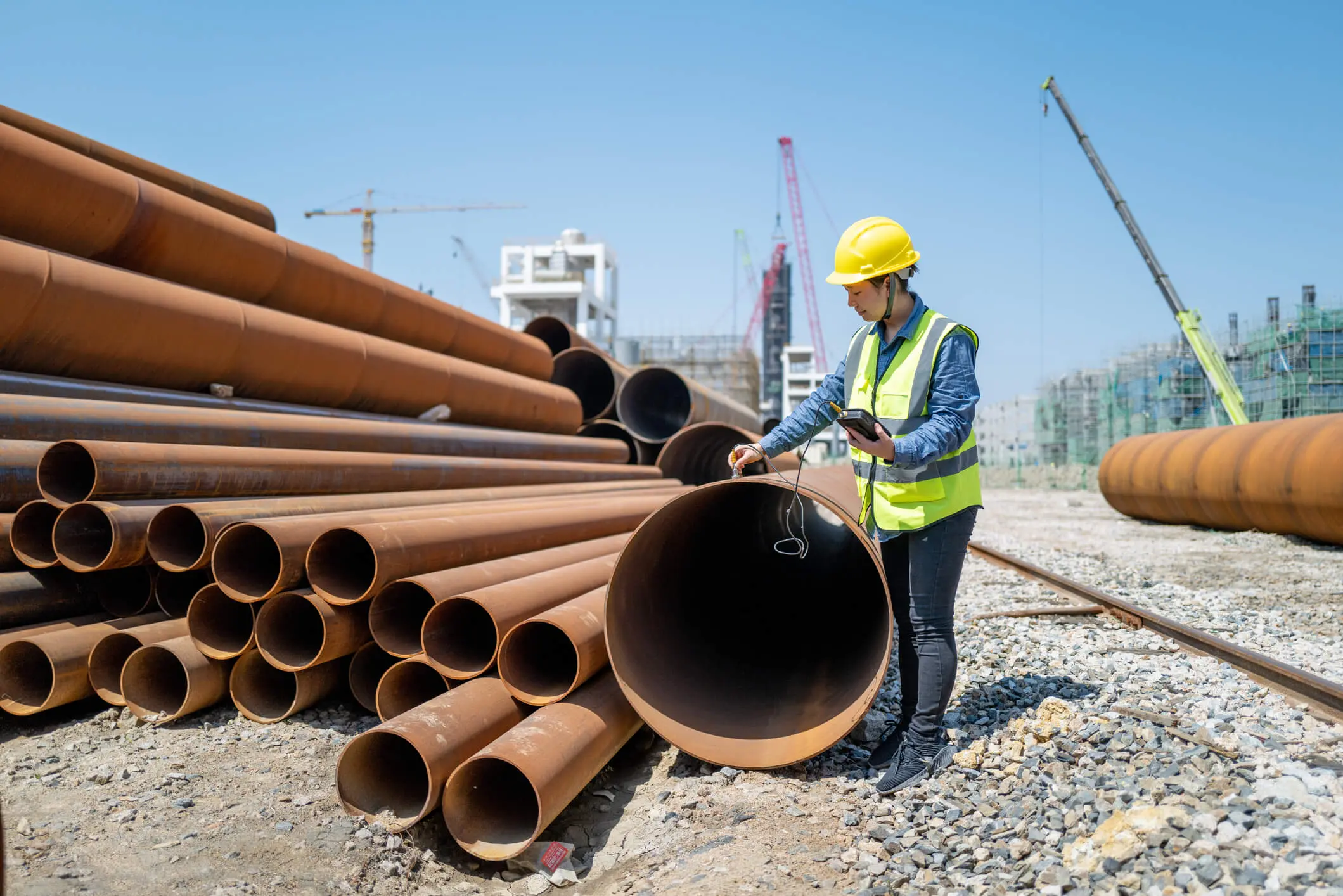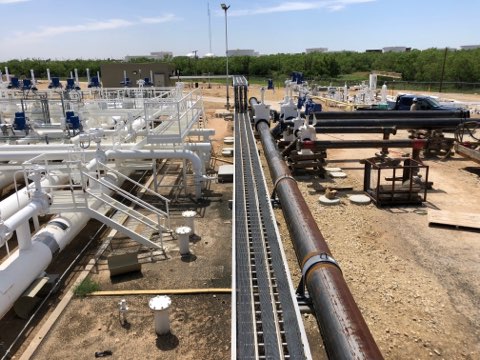Inside Modern Water Innovation at Creek Pipe Company
A Comprehensive Overview to Comprehending Pipelines and Their Function in Building and construction
Pipelines are important parts in building, serving vital features in gas, waste, and water administration. Their selection and application can substantially influence a structure's effectiveness and security. Numerous materials, such as PVC, copper, and PEX, provide unique advantages suited to particular requirements (Creek Pipe Company). Recognizing these elements is vital for any type of building project. As one explores the details of pipelines, the implications for conformity and public health and wellness become increasingly obvious
The Importance of Pipeline in Building
Pipes serve as essential channels in construction, facilitating the activity of water, gas, and waste throughout buildings and framework. Their duty expands beyond mere transportation; they are vital for making sure the functionality and safety and security of household and commercial settings. Effectively installed pipes add to the effective circulation of sources, making it possible for day-to-day activities such as bathing, cooking, and home heating. Additionally, pipelines play a crucial function in waste monitoring, guaranteeing that sewer and wastewater are efficiently gotten rid of from living spaces.The relevance of pipes is likewise mirrored in their influence on public health. Damaged or poor piping systems can bring about contamination and harmful conditions, making top quality materials and setup techniques essential. Additionally, pipelines need to follow numerous building regulations and guidelines, which are developed to safeguard both occupants and the atmosphere. Subsequently, the significance of pipes in building encompasses both useful performance and important health and wellness factors to consider.
Types of Pipeline Utilized in Structure Jobs
Numerous kinds of pipelines play a considerable function in structure tasks, each developed to satisfy specific needs and applications. Amongst the most typically made use of pipeline kinds are PVC, which is immune and lightweight to deterioration, making it suitable for drainage and air vent systems. CPVC pipes, similar to PVC, can hold up against higher temperature levels, often utilized in warm water systems. Copper pipes are recognized for their toughness and integrity, often utilized in pipes and heating applications. Galvanized steel pipes, while much less usual today, were as soon as a criterion for water system lines as a result of their stamina. Furthermore, PEX (cross-linked polyethylene) pipelines are acquiring appeal for domestic pipes due to their versatility and resistance to scaling and chlorine. Cast iron pipelines are favored for their sound-dampening residential or commercial properties, frequently made use of in waste and soil systems. Each pipeline type offers distinct features, guaranteeing reliable procedure in building projects.
Usual Products for Piping and Their Properties
In construction, the option of pipe materials is crucial for making sure sturdiness and performance. Steel pipelines supply strength and resistance to high pressures, while plastic pipelines supply lightweight and corrosion-resistant options. Compound pipes incorporate the benefits of both products, making them versatile alternatives for various applications.
Steel Pipe Options
Metal pipes are integral parts in building, providing a variety of options that provide to different applications and environmental conditions. The most common products include steel, copper, and cast iron. Steel pipelines are known for their stamina and longevity, making them ideal for high-pressure applications. Copper pipes are favored for their deterioration resistance and antimicrobial residential properties, frequently utilized in pipes systems. Cast iron pipelines provide superb noise insulation and are excellent for waste and water drainage systems. Each metal type has unique benefits; for instance, galvanized steel can stand up to corrosion, while stainless-steel offers exceptional rust resistance. Selecting the appropriate steel pipeline relies on elements such as cost, ecological exposure, and the specific demands of the building job.

Plastic Pipe Advantages
Plastic pipelines have actually acquired appeal in building and construction due to their lightweight nature and adaptability. These pipelines, made from materials such as PVC, CPVC, and PE, offer exceptional resistance to rust and chemical damage, making them appropriate for various applications. Their convenience of installation more boosts their appeal, as they can be cut and joined without unique devices. Additionally, plastic pipelines are typically more economical contrasted to steel choices, contributing to reduced general task expenses. Their smooth indoor surfaces lower friction and enhance circulation prices, while insulation buildings help preserve temperature level control in pipes systems - Creek Pipe Company LLC. With a vast array of configurations and sizes available, plastic pipes efficiently satisfy the diverse needs of contemporary construction jobs
Compound Pipeline Characteristics
Compound pipes incorporate different products to take advantage of their private strengths, causing improved efficiency and toughness. Generally, these pipelines include layers that may consist of porcelains, plastics, and metals, each contributing one-of-a-kind homes. As an example, the internal layer may be made from a corrosion-resistant product, while the outer layer supplies toughness and influence resistance. This combination permits composite pipes to stand up to severe temperature levels and stress, making them suitable for a vast array of applications, including water and industrial processes. Additionally, composite pipes are commonly lighter than typical products, helping with much easier handling and installment. Their convenience and adaptability to different settings make them a preferred option in contemporary construction jobs, guaranteeing durability and performance in fluid transport systems.
Applications of Pipes in Pipes Systems

Electric Conduits: The Role of Piping in Wiring
In contemporary construction, electrical avenues play a crucial duty in ensuring the risk-free and effective directing of electrical wiring throughout buildings. These pipes supply a safety pathway for electrical wires, safeguarding them from physical damage and ecological factors. Different products, such as PVC, metal, and flexible conduits, are used relying on the details needs of the installation.Furthermore, channels aid in organizing electrical wiring systems, minimizing the danger of electric threats like short circuits or fires. They also assist in easier maintenance and upgrades, as wires can be accessed and changed without considerable interruption to the structure.Proper installation of electrical conduits is important for conformity with building ordinance and safety policies. This organized technique not only improves the durability of the electrical system yet likewise adds to the general safety and performance of the building, making electric channels essential in modern-day building and construction methods.
Picking the Right Pipe for Your Task
Just how can one ensure the ideal pipeline selection for a construction project? The choice process starts with comprehending the try this site details demands of the project, consisting of the kind of fluids being delivered, pressure ratings, and ecological problems. Material options, such as Steel, copper, and pvc, need to be reviewed based upon longevity, deterioration resistance, and thermal properties.Next, one must think about the pipeline's diameter and circulation capability to identify efficient operation. Regulative standards and codes have to additionally be adhered to, as they dictate the appropriate materials and practices for particular applications. Consulting with experts and making use of considerable resources can further aid in making notified decisions.Finally, examining the cost-effectiveness of different options is important, balancing first expenses with long-term upkeep and substitute prices - Creek Pipe Midland. By thoroughly analyzing these factors, one can confidently choose the most appropriate pipe for their building job, guaranteeing both performance and conformity

Maintenance and Inspection of Water Lines in Construction
Appropriate option of pipes sets the structure for their lasting performance, making maintenance and assessment essential parts in construction. Regular upkeep assurances that any possible concerns, such as leakages, rust, or obstructions, are determined and addressed promptly, decreasing expensive fixings and task delays. Arranged evaluations, consisting of visual analyses and stress examinations, play a vital function in reviewing the stability of pipeline systems.Additionally, monitoring environmental aspects, such as temperature level changes and soil conditions, can help anticipate damage. Using sophisticated innovations, such as CCTV for interior assessments, can boost the performance of upkeep efforts. It is important to document assessment searchings for and upkeep activities to develop a complete background of the pipeline systems. By focusing on maintenance and evaluation, building and construction professionals can extend the life-span of their piping systems, ensuring they operate successfully and dependably throughout the project's duration.
Regularly Asked Inquiries
Just How Do Pipes Impact Power Performance in Structures?
Pipes significantly affect energy performance in buildings by regulating heating and cooling systems. Correct insulation and materials lower energy loss, while efficient plumbing layouts reduce water use, inevitably resulting in lower energy intake and functional costs.
What Regulations Govern Pipe Installation in Construction?
Rules regulating pipe installation in construction typically consist of neighborhood and nationwide building ordinance, pipes codes, and safety standards. These assurance conformity with architectural honesty, product requirements, and health and wellness demands, advertising safety and effectiveness in building and construction techniques.
Can Piping Be Recycled After Usage?
The concern of pipeline recyclability is substantial. Many materials, such as steel and particular plastics, can be reused properly. However, the problem and type of pipe impact reusing expediency, necessitating correct evaluation prior to disposal.
How Do Weather Problems Effect Pipe Efficiency?
Climate problems significantly influence pipeline efficiency. Extreme temperature levels can cause development or tightening, while moisture may cause rust. Additionally, heavy precipitation can increase dirt stress, impacting security and general functionality of the piping system.
What Are the Signs of Pipe Failure to Watch For?
Signs of pipe failure include leakages, unusual sounds, staining of water, decreased water pressure, and visible corrosion. Routine assessments can aid spot these problems early, protecting against costly repair work and ensuring system capability in the long term. Pipelines play a crucial duty in waste management, making sure that sewage and wastewater are successfully removed from living spaces.The importance of pipes is additionally mirrored in their impact on public health. In building and construction, the choice of pipe materials is essential for making certain longevity and functionality. Steel pipelines provide strength and resistance to high pressures, while plastic pipes provide lightweight and corrosion-resistant choices. Furthermore, pipelines are made use of to get rid of wastewater, linking commodes, sinks, and drains to municipal sewer systems or septic tanks.Different types of pipelines, such as PVC, copper, and PEX, are picked based on aspects like sturdiness, expense, and certain application needs. Exactly how can one assure the best pipeline option for a building and construction job?